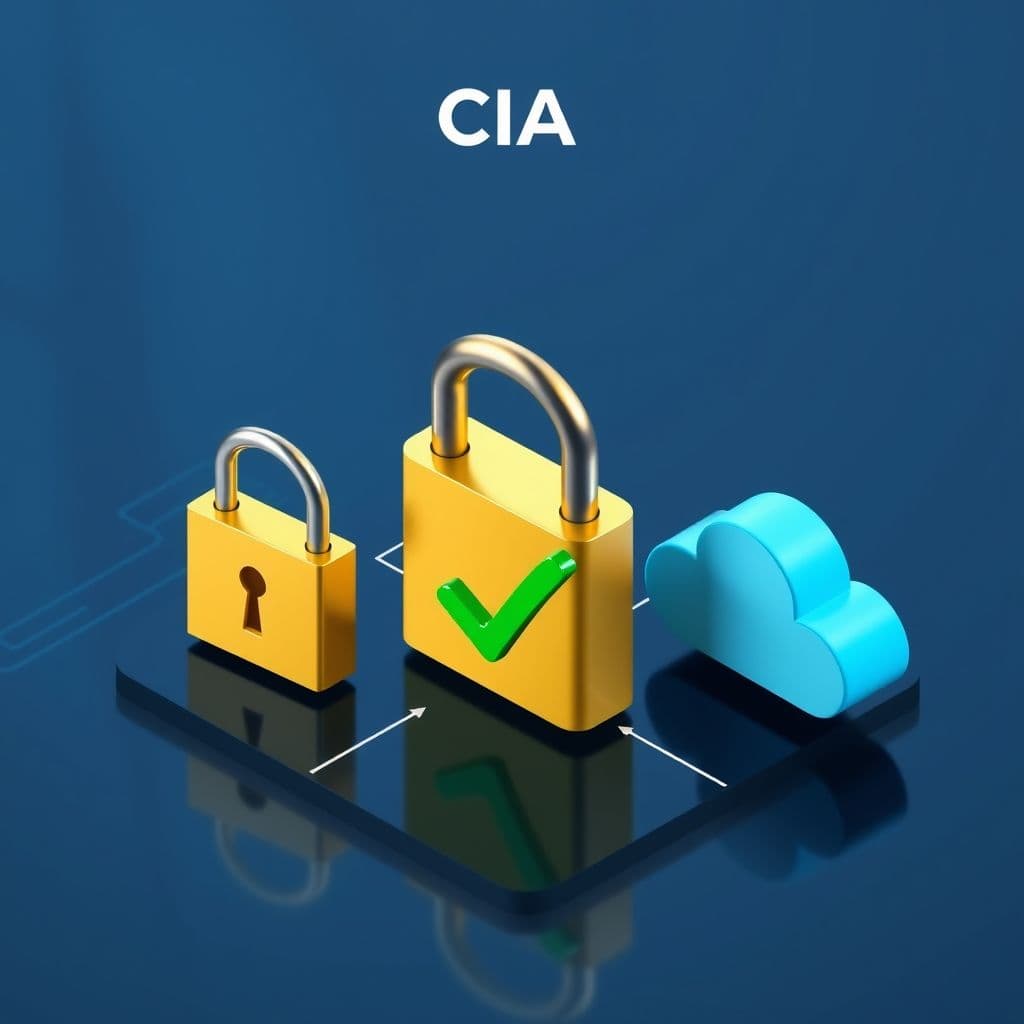Corporate Data Security Management: A Step-by-Step Guide to Protecting Your Business

In today's digital age, corporate data security management is more critical than ever. With cyber threats evolving at an unprecedented rate, businesses must prioritize protecting sensitive information to avoid devastating breaches. This guide will walk you through the 10 essential steps to mastering corporate data security, from understanding the basics to implementing advanced protection measures. Whether you're an IT professional or a business leader, this comprehensive approach will equip you with the knowledge and tools to safeguard your organization's data effectively. View original learning path
Step 1: Understand the Basics of Data Security
Before diving into complex security measures, it's crucial to grasp the fundamental concepts of data security. Confidentiality ensures that sensitive information is accessible only to authorized individuals. Integrity guarantees that data remains accurate and unaltered, while Availability ensures that data is accessible when needed. Authentication verifies user identities, and Authorization determines what resources users can access. Encryption transforms data into unreadable formats to protect it from unauthorized access. For example, using end-to-end encryption for emails ensures that only the intended recipient can read the message.

Step 2: Learn about Common Security Threats
Understanding common threats is the first line of defense. Malware, including viruses and ransomware, can cripple systems. Phishing attacks trick employees into revealing sensitive information, while Social Engineering exploits human psychology. Denial of Service (DoS) attacks overwhelm systems, rendering them unusable. Insider Threats come from within the organization, and Data Breaches expose sensitive information. For instance, a phishing email disguised as a legitimate request from HR could lead to compromised credentials.
Step 3: Familiarize Yourself with Security Standards and Regulations
Compliance with security standards is non-negotiable. ISO 27001 provides a framework for information security management. PCI DSS protects payment card data, while HIPAA safeguards healthcare information. GDPR ensures data privacy for EU citizens, and the NIST Cybersecurity Framework offers guidelines for improving security posture. For example, a healthcare provider must comply with HIPAA to protect patient records.
Step 4: Understand Risk Assessment and Management
Risk assessment identifies potential threats and vulnerabilities. Start by Identifying Assets—what data needs protection? Conduct a Threat Assessment to understand potential attackers and their methods. Vulnerability Assessment reveals weaknesses in your systems. Risk Mitigation involves implementing controls to reduce risks, and Incident Response Planning prepares you for potential breaches. For example, regular vulnerability scans can uncover outdated software that needs patching.

Step 5: Implement Access Controls and Authentication Mechanisms
Controlling who accesses what is vital. User Access Management ensures only authorized personnel have access. Multi-factor Authentication (MFA) adds an extra layer of security. Role-based Access Control (RBAC) assigns permissions based on job roles. Privileged Access Management (PAM) restricts high-level access, and Single Sign-On (SSO) simplifies login processes while maintaining security. For example, requiring MFA for accessing financial systems can prevent unauthorized access.
Step 6: Secure Network Infrastructure
A secure network is the backbone of data protection. Firewalls monitor and control incoming and outgoing traffic. Intrusion Detection and Prevention Systems (IDPS) identify and block threats. Virtual Private Networks (VPNs) encrypt remote connections. Network Segmentation divides the network into secure zones, and Wireless Network Security protects against unauthorized access. For instance, segmenting guest Wi-Fi from internal networks prevents potential breaches.
Step 7: Implement Data Encryption
Encryption is a powerful tool for protecting data. Symmetric Encryption uses a single key for encryption and decryption, while Asymmetric Encryption uses a pair of keys. Transport Layer Security (TLS) and Secure Sockets Layer (SSL) secure data in transit. Public Key Infrastructure (PKI) manages digital certificates. For example, encrypting sensitive customer data ensures it remains secure even if intercepted.
Step 8: Establish Security Incident Response Procedures
Preparing for incidents minimizes damage. Detection and Analysis identify breaches early. Containment and Eradication stop the threat and remove it. Recovery and Restoration bring systems back online. Post-Incident Review analyzes what went wrong, and Continuous Improvement updates procedures. For example, having a clear incident response plan can reduce downtime during a ransomware attack.
Step 9: Stay Updated on Emerging Threats and Technologies
Cybersecurity is ever-evolving. Threat Intelligence keeps you informed about new threats. Security Awareness Training educates employees. Penetration Testing identifies vulnerabilities. Security Information and Event Management (SIEM) provides real-time analysis, and Artificial Intelligence (AI) enhances threat detection. For example, regular training sessions can help employees recognize phishing attempts.

Step 10: Gain Practical Experience and Apply Knowledge
Hands-on experience solidifies learning. Internships or Entry-Level Positions provide real-world exposure. Participating in Security Projects hones skills. Continuous Learning and Professional Development keep you updated. Networking with Security Professionals offers insights, and Contributing to Security Communities fosters growth. For example, joining a cybersecurity forum can provide valuable tips and support.
Conclusion
Mastering corporate data security management is a continuous journey that requires a solid understanding of fundamental concepts, awareness of threats, compliance with standards, and practical application of security measures. By following these 10 steps, you can build a robust security posture that protects your organization's sensitive data and ensures business continuity. Remember, cybersecurity is not a one-time effort but an ongoing commitment to staying vigilant and proactive.
Frequently Asked Questions
- How long does it take to master corporate data security management?
- Mastering data security management is an ongoing process due to the constantly evolving threat landscape. However, with consistent study and practical experience, you can gain a solid foundation within 6-12 months. Continuous learning and staying updated with emerging threats are essential for long-term success.
- What are common mistakes beginners make in data security?
- Common mistakes include neglecting employee training, using weak passwords, failing to update software regularly, overlooking physical security, and not having an incident response plan. Beginners often focus solely on technical measures while underestimating the importance of policies and human factors in security.
- Which certification is best for starting a career in data security?
- For beginners, certifications like CompTIA Security+, Certified Information Systems Security Professional (CISSP), or Certified Information Security Manager (CISM) are excellent starting points. These certifications cover fundamental concepts and are widely recognized in the industry.





